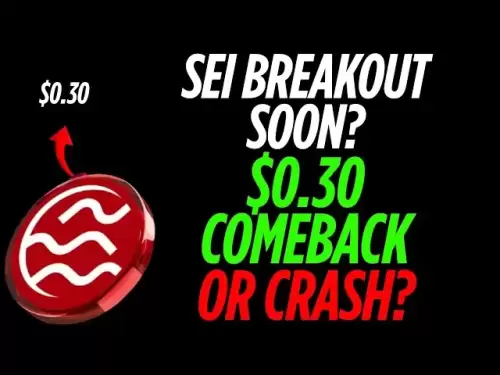-
 Bitcoin
Bitcoin $109,583.2239
0.19% -
 Ethereum
Ethereum $2,583.4612
0.48% -
 Tether USDt
Tether USDt $1.0003
-0.04% -
 XRP
XRP $2.2681
0.70% -
 BNB
BNB $659.9218
-0.52% -
 Solana
Solana $151.4961
-0.37% -
 USDC
USDC $0.9999
-0.02% -
 TRON
TRON $0.2861
1.20% -
 Dogecoin
Dogecoin $0.1718
0.04% -
 Cardano
Cardano $0.5960
-0.07% -
 Hyperliquid
Hyperliquid $40.1233
2.85% -
 Sui
Sui $2.9974
2.48% -
 Bitcoin Cash
Bitcoin Cash $497.1279
-1.76% -
 Chainlink
Chainlink $13.7275
-0.22% -
 UNUS SED LEO
UNUS SED LEO $9.0241
0.70% -
 Avalanche
Avalanche $18.5536
-0.88% -
 Stellar
Stellar $0.2421
1.39% -
 Toncoin
Toncoin $2.8593
-0.51% -
 Shiba Inu
Shiba Inu $0.0...01187
-0.07% -
 Litecoin
Litecoin $90.0023
2.90% -
 Hedera
Hedera $0.1590
2.79% -
 Monero
Monero $322.1495
0.00% -
 Polkadot
Polkadot $3.5453
-1.00% -
 Dai
Dai $1.0000
-0.01% -
 Bitget Token
Bitget Token $4.5733
-1.06% -
 Ethena USDe
Ethena USDe $1.0002
-0.01% -
 Uniswap
Uniswap $7.6345
3.03% -
 Aave
Aave $279.2583
0.47% -
 Pepe
Pepe $0.0...01003
-1.52% -
 Pi
Pi $0.4941
-0.32%
Why does Exodus wallet sometimes fail to recognize my Trezor device?
Exodus may fail to recognize Trezor due to outdated software, driver issues, USB problems, or security settings; updating both and troubleshooting can resolve this.
Apr 09, 2025 at 01:00 pm
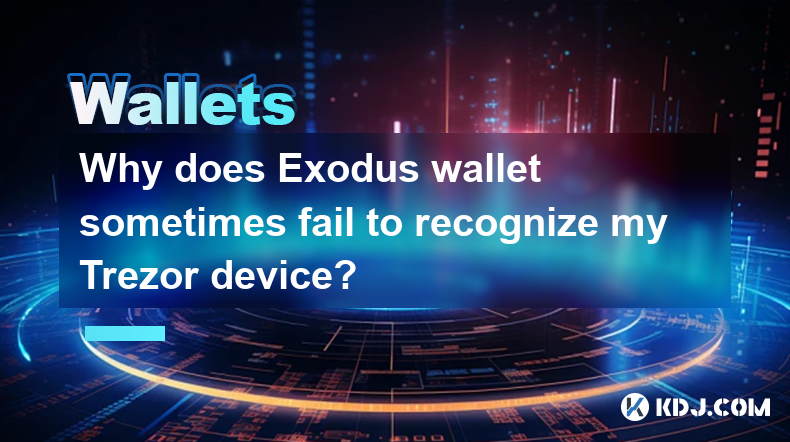
Introduction to Exodus and Trezor Integration
Exodus is a popular multi-currency wallet that supports a wide range of cryptocurrencies, offering users a user-friendly interface and robust security features. One of its notable features is the ability to integrate with hardware wallets like Trezor, which adds an extra layer of security for storing cryptocurrencies. However, users sometimes encounter issues where Exodus fails to recognize their Trezor device. This article delves into the reasons behind this problem and provides detailed solutions to resolve it.
Common Reasons for Trezor Not Being Recognized by Exodus
There are several reasons why Exodus might fail to recognize your Trezor device. Understanding these can help you troubleshoot the issue more effectively.
- Outdated Software: Both Exodus and Trezor need to be running the latest software versions to ensure compatibility. If either is outdated, it can lead to recognition issues.
- Driver Issues: Trezor requires specific drivers to communicate with your computer. If these drivers are not installed correctly or are outdated, it can prevent Exodus from recognizing the device.
- USB Connection Problems: A faulty USB connection or using a USB hub can sometimes cause recognition issues. Direct connection to your computer is often recommended.
- Security Settings: Sometimes, security settings on your computer or within the Trezor device itself can block the connection to Exodus.
- Firmware Issues: If the firmware on your Trezor device is not up to date, it might not be compatible with the latest version of Exodus.
How to Update Exodus and Trezor Software
Keeping both Exodus and Trezor updated is crucial for ensuring they work seamlessly together. Here’s how you can update both:
Updating Exodus:
- Open the Exodus wallet on your computer.
- Click on the Settings icon in the bottom left corner.
- Scroll down to the About section.
- Click on Check for Updates. If an update is available, follow the prompts to install it.
Updating Trezor:
- Connect your Trezor device to your computer.
- Open the Trezor Bridge application if you are using a desktop computer, or use the Trezor Suite if you are on a mobile device.
- Navigate to the Firmware section.
- Click on Update and follow the on-screen instructions to complete the firmware update.
Troubleshooting USB Connection Issues
A common issue that can prevent Exodus from recognizing your Trezor device is related to the USB connection. Here are steps to troubleshoot this:
- Direct Connection: Ensure that your Trezor device is connected directly to your computer, rather than through a USB hub.
- Try Different USB Ports: Sometimes, certain USB ports on your computer may not function correctly. Try connecting your Trezor to different USB ports.
- Check USB Cable: Ensure that the USB cable you are using is not damaged. Try using a different cable if possible.
- Restart Your Computer: Sometimes, simply restarting your computer can resolve USB connection issues.
Resolving Driver and Security Settings Issues
Driver and security settings can also cause Exodus to fail in recognizing your Trezor device. Here’s how to address these issues:
Installing Trezor Drivers:
- Connect your Trezor device to your computer.
- Open the Trezor Bridge application.
- If the drivers are not installed, the application will prompt you to install them. Follow the on-screen instructions to complete the installation.
Adjusting Security Settings:
- On your computer, ensure that your antivirus or firewall settings are not blocking the connection between Exodus and Trezor.
- Within the Trezor device, ensure that the security settings allow for connection to third-party applications like Exodus. You can adjust these settings through the Trezor Suite.
Verifying Trezor Firmware Compatibility
Ensuring that your Trezor device’s firmware is compatible with the version of Exodus you are using is crucial. Here’s how to check and update the firmware:
Checking Firmware Version:
- Connect your Trezor device to your computer.
- Open the Trezor Suite.
- Navigate to the Firmware section to see the current firmware version.
Updating Firmware:
- If an update is available, click on Update and follow the on-screen instructions.
- Ensure that you do not disconnect your Trezor device during the update process, as this can cause issues.
Frequently Asked Questions
Q: Can I use a Trezor Model T with Exodus, or is it only compatible with the Trezor One?
A: Yes, you can use both the Trezor Model T and the Trezor One with Exodus. Both models are supported, but ensure that you are using the latest versions of both the Trezor firmware and the Exodus software for optimal compatibility.
Q: Does Exodus support all cryptocurrencies that Trezor supports?
A: While Exodus supports a wide range of cryptocurrencies, it may not support all the cryptocurrencies that Trezor supports. Always check the list of supported cryptocurrencies on the Exodus website before attempting to use a specific cryptocurrency with your Trezor device.
Q: Can I use multiple Trezor devices with one Exodus wallet?
A: Yes, you can use multiple Trezor devices with one Exodus wallet. However, you will need to connect each device individually and set it up within Exodus. Ensure that you keep track of which device is associated with which wallet for security purposes.
Q: What should I do if none of the troubleshooting steps resolve the issue?
A: If you have tried all the troubleshooting steps and Exodus still does not recognize your Trezor device, consider reaching out to the support teams of both Exodus and Trezor. They can provide more specific guidance based on your situation.
Disclaimer:info@kdj.com
The information provided is not trading advice. kdj.com does not assume any responsibility for any investments made based on the information provided in this article. Cryptocurrencies are highly volatile and it is highly recommended that you invest with caution after thorough research!
If you believe that the content used on this website infringes your copyright, please contact us immediately (info@kdj.com) and we will delete it promptly.
- Coinbase, Wormhole, and the Crypto Exchange Evolution: What's the Deal?
- 2025-07-04 06:50:12
- Solana Price Analysis: Navigating Institutional Demand and Market Crossroads
- 2025-07-04 07:15:13
- Arctic Pablo Coin: The Meme Coin Melting Faces in 2025
- 2025-07-04 07:15:13
- Dogwifhat (WIF) Price Surge: Meme Coin Mania or Something More?
- 2025-07-04 06:30:13
- Shiba Inu Killers and Crypto Coin Myths: Navigating the Investment Landscape in 2025
- 2025-07-04 07:30:13
- Meme Coin Mania: Why Alpha Groups and Investment Radars Are Eyeing LILPEPE
- 2025-07-04 07:30:13
Related knowledge
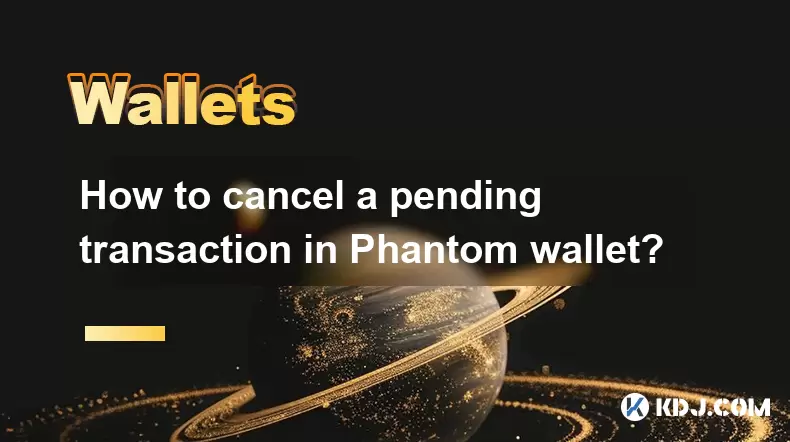
How to cancel a pending transaction in Phantom wallet?
Jul 03,2025 at 07:21pm
Understanding Pending Transactions in Phantom WalletA pending transaction in the Phantom wallet occurs when a user initiates a transfer or interaction with the Solana blockchain, but it hasn't yet been confirmed by the network. This can happen due to various reasons such as low transaction fees, network congestion, or incorrect gas settings. It's import...
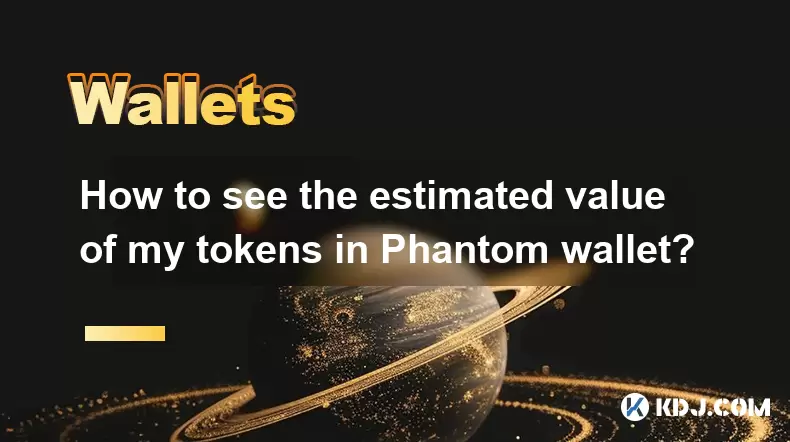
How to see the estimated value of my tokens in Phantom wallet?
Jul 04,2025 at 12:21am
What is Phantom Wallet?Phantom wallet is one of the most popular cryptocurrency wallets designed for the Solana blockchain. It allows users to store, send, receive, and manage various tokens built on Solana, including SPL tokens and NFTs. The wallet offers a user-friendly interface, making it accessible for both beginners and advanced users in the crypt...

How to lock my Phantom wallet extension?
Jul 03,2025 at 11:14am
What Is the Phantom Wallet and Why Lock It?The Phantom wallet is a popular non-custodial cryptocurrency wallet designed for interacting with the Solana blockchain. Supporting both browser extensions and mobile apps, Phantom allows users to store, send, receive, and stake SOL tokens, as well as interact with decentralized applications (dApps). Securing y...

Does Phantom wallet offer two-factor authentication (2FA)?
Jul 03,2025 at 09:00am
Understanding Phantom Wallet and Its Security FeaturesPhantom wallet is a widely used non-custodial cryptocurrency wallet that supports the Solana blockchain. It allows users to store, send, receive, and interact with decentralized applications (dApps) seamlessly. As security is a top priority for any crypto wallet user, security features like two-facto...

What is "rent" on Solana and how does it affect my Phantom wallet?
Jul 02,2025 at 08:35pm
Understanding 'Rent' on SolanaIn the context of Solana, the term 'rent' refers to a storage fee that users pay for maintaining data on the blockchain. Unlike Ethereum, where storage costs are paid once via gas fees during contract deployment, Solana implements a recurring cost model to ensure efficient usage of network resources. This means that any acc...
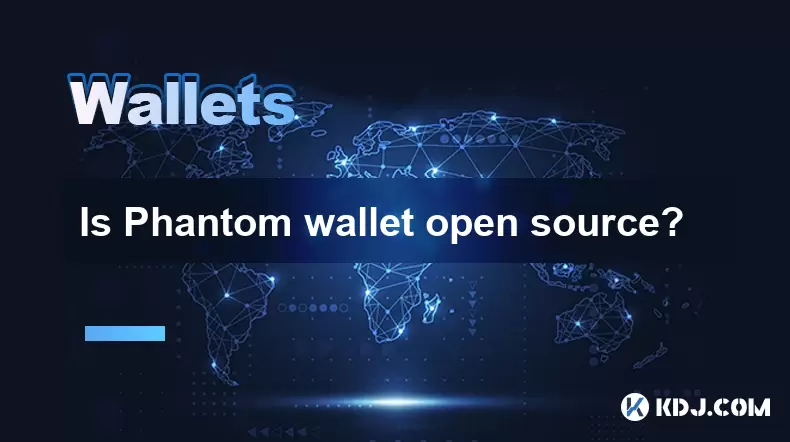
Is Phantom wallet open source?
Jul 03,2025 at 12:29am
What is Phantom Wallet?Phantom wallet is a non-custodial cryptocurrency wallet primarily designed for the Solana blockchain. It allows users to store, send, receive, and interact with decentralized applications (dApps) on the Solana network. The wallet is available as a browser extension and mobile application, offering a seamless experience for both be...

How to cancel a pending transaction in Phantom wallet?
Jul 03,2025 at 07:21pm
Understanding Pending Transactions in Phantom WalletA pending transaction in the Phantom wallet occurs when a user initiates a transfer or interaction with the Solana blockchain, but it hasn't yet been confirmed by the network. This can happen due to various reasons such as low transaction fees, network congestion, or incorrect gas settings. It's import...

How to see the estimated value of my tokens in Phantom wallet?
Jul 04,2025 at 12:21am
What is Phantom Wallet?Phantom wallet is one of the most popular cryptocurrency wallets designed for the Solana blockchain. It allows users to store, send, receive, and manage various tokens built on Solana, including SPL tokens and NFTs. The wallet offers a user-friendly interface, making it accessible for both beginners and advanced users in the crypt...

How to lock my Phantom wallet extension?
Jul 03,2025 at 11:14am
What Is the Phantom Wallet and Why Lock It?The Phantom wallet is a popular non-custodial cryptocurrency wallet designed for interacting with the Solana blockchain. Supporting both browser extensions and mobile apps, Phantom allows users to store, send, receive, and stake SOL tokens, as well as interact with decentralized applications (dApps). Securing y...

Does Phantom wallet offer two-factor authentication (2FA)?
Jul 03,2025 at 09:00am
Understanding Phantom Wallet and Its Security FeaturesPhantom wallet is a widely used non-custodial cryptocurrency wallet that supports the Solana blockchain. It allows users to store, send, receive, and interact with decentralized applications (dApps) seamlessly. As security is a top priority for any crypto wallet user, security features like two-facto...

What is "rent" on Solana and how does it affect my Phantom wallet?
Jul 02,2025 at 08:35pm
Understanding 'Rent' on SolanaIn the context of Solana, the term 'rent' refers to a storage fee that users pay for maintaining data on the blockchain. Unlike Ethereum, where storage costs are paid once via gas fees during contract deployment, Solana implements a recurring cost model to ensure efficient usage of network resources. This means that any acc...

Is Phantom wallet open source?
Jul 03,2025 at 12:29am
What is Phantom Wallet?Phantom wallet is a non-custodial cryptocurrency wallet primarily designed for the Solana blockchain. It allows users to store, send, receive, and interact with decentralized applications (dApps) on the Solana network. The wallet is available as a browser extension and mobile application, offering a seamless experience for both be...
See all articles























